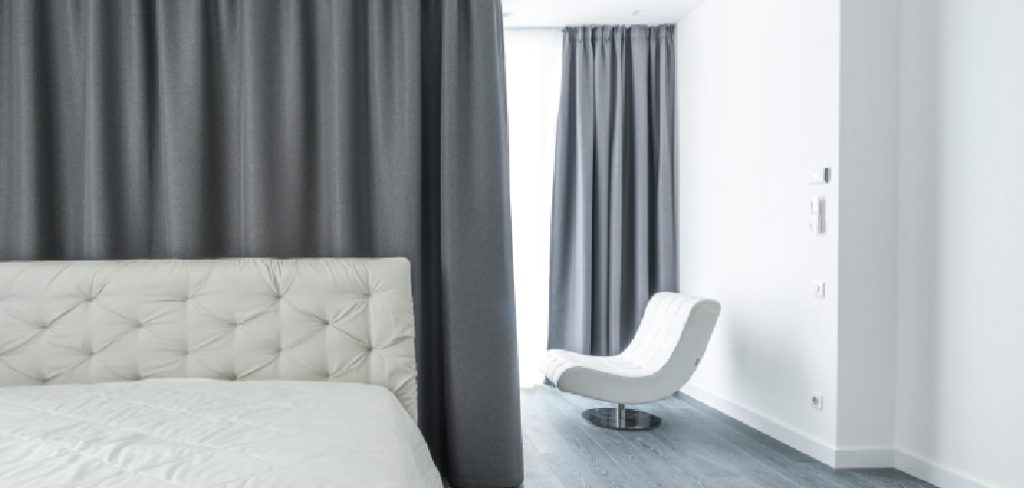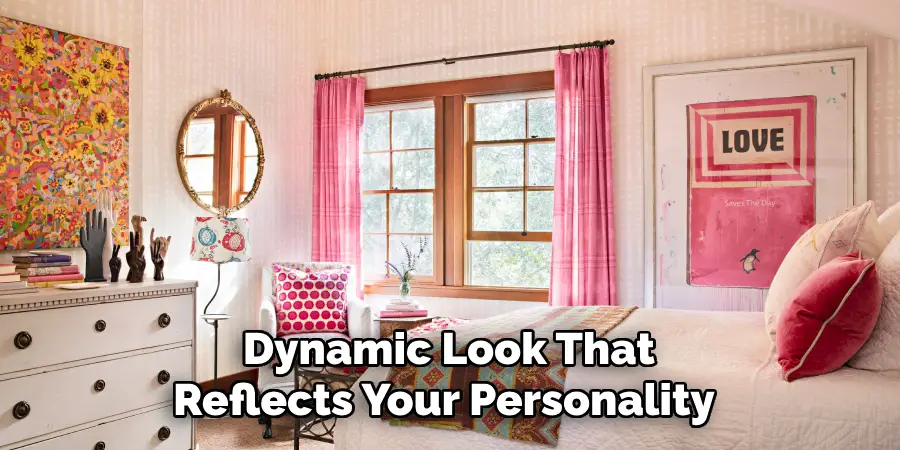Choosing the right curtains to complement your bedding can significantly enhance your bedroom’s aesthetic appeal. This coordination not only ties together various elements in the room but also creates a harmonious and inviting atmosphere. Whether your goal is to achieve a modern look, a cozy retreat, or a vibrant sanctuary, understanding color theory, patterns, and textures plays a crucial role. This guide will walk you through practical tips and creative ideas on how to coordinate curtains with bedding to elevate your bedroom decor.

Benefits of Creating a Well-Matched Look
Achieving a well-matched look between your curtains and bedding has several benefits that go beyond mere aesthetics. Firstly, a cohesive design creates a more peaceful and relaxing environment, essential for restful sleep and unwinding after a long day. When your bedroom elements work together seamlessly, it reduces visual clutter and promotes a sense of order and comfort. Additionally, a coordinated look can enhance the perceived value of your living space, making it more appealing and welcoming to guests. Whether you are planning to sell your home or simply wish to create a comfortable haven for yourself, harmonizing your decor choices can significantly impact the overall appeal and functionality of your bedroom.
Understanding Color Coordination Basics
Color coordination is an essential aspect of interior design, particularly when it comes to matching curtains and bedding. The first step is to familiarize yourself with the color wheel, which is a vital tool for selecting complementary or analogous colors. Complementary colors, which are opposite each other on the wheel, such as blue and orange or purple and yellow, can make a bold statement when paired correctly. Analogous colors, like blue, blue-green, and green, sit next to each other and create a more harmonious and serene atmosphere.

Another important concept to consider is the color temperature, which refers to how warm or cool a color feels. Warm colors, such as reds, oranges, and yellows, tend to evoke energy and coziness, while cool colors like blues, greens, and purples are often associated with calmness and relaxation. By understanding these basics, you’ll be better equipped to choose a color scheme that enhances your bedroom decor and personal comfort.
10 Methods How to Coordinate Curtains with Bedding
1. Match Colors for a Cohesive Look
One of the simplest ways to coordinate curtains with bedding is to match the colors. Select curtains that share the same color palette as your bedding, whether through a single color or a combination of hues. For example, if your bedding features a soft blue and white pattern, consider choosing curtains that are a solid blue or a subtle print incorporating both colors. This approach creates a seamless transition between the two elements, giving the room a unified appearance. When matching colors, pay attention to shades and tones to ensure they complement rather than clash, creating a serene and balanced environment.
2. Choose Complementary Patterns
If your bedding features a bold or intricate pattern, opting for curtains in a complementary pattern can add visual interest without overwhelming the space. For instance, if you have floral bedding, you might choose striped curtains that incorporate one of the colors from the bedding. This method creates a dynamic contrast while maintaining harmony. When mixing patterns, aim for a common color or theme that ties them together, ensuring the overall look feels intentional. Additionally, consider the scale of the patterns; pairing a large-scale print with a smaller-scale one can help create balance and prevent visual chaos.
3. Create a Monochromatic Scheme
A monochromatic color scheme is a timeless approach that emphasizes different shades and textures within a single color family. When coordinating curtains and bedding, choose various shades of one color to create depth and sophistication. For example, you might select a light gray duvet cover paired with charcoal gray curtains. To add further dimension, consider incorporating varying textures, such as a soft linen or velvet for the curtains and a smooth cotton or silk for the bedding. This method results in a tranquil and cohesive look that feels both elegant and modern.

4. Incorporate Textures for Depth
Textures play a crucial role in interior design, and incorporating different textures in your curtains and bedding can elevate the overall aesthetic of the room. For instance, if your bedding is made from a crisp, smooth fabric, consider pairing it with textured curtains, such as linen or a woven fabric, to create contrast. Conversely, if your bedding is plush or fluffy, such as a faux fur or thick quilt, opt for sleek curtains that provide a contrasting texture. This method not only enhances visual appeal but also adds a tactile element to the space, making it feel warm and inviting.
5. Use Neutral Curtains with Colorful Bedding
If your bedding is vibrant or features intricate patterns, using neutral curtains can provide a calming balance and allow the bedding to take center stage. Choose curtains in shades like white, beige, gray, or soft pastels to create a subtle backdrop that complements your bedding without competing for attention. This method works well in spaces where you want to highlight bold colors or patterns in your bedding while maintaining a serene atmosphere. Neutral curtains can also make the room feel more spacious and airy, contributing to an overall relaxed vibe.
6. Consider Length and Style
The length and style of your curtains can also impact how they coordinate with your bedding. For a cohesive look, consider using curtains that match the height of your bedding. For instance, if your bedding features a modern, tailored look with crisp edges, opt for tailored or straight-cut curtains. On the other hand, if your bedding is more relaxed or bohemian, flowy, draped curtains can enhance that vibe. Additionally, consider whether you want your curtains to hit the floor, just below the window sill, or even puddle slightly on the floor for a more dramatic effect. The right length and style can unify your room’s design, contributing to an overall polished appearance.

7. Use Accessories to Tie the Look Together
Accessories are an excellent way to enhance the coordination between curtains and bedding. Consider using decorative pillows, throws, or even a bedspread that incorporates colors or patterns from both the bedding and curtains. For example, if your bedding features a blue and white pattern and your curtains are solid white, adding a few blue throw pillows on the bed can create a connection between the two elements. Accessories not only serve a functional purpose but also provide an opportunity to bring in additional textures and colors, enhancing the overall design of the room.
8. Layering with Sheers
Layering sheer curtains under heavier drapes can create a sophisticated look while allowing you to control light and privacy. For instance, if your bedding is a bold print, consider pairing it with sheer curtains that pick up one of the colors in the bedding. This method softens the overall appearance and adds an elegant touch to the room. When using layered curtains, ensure that the sheers are light and airy, allowing natural light to filter through, while the heavier drapes can be drawn for privacy. This technique not only enhances coordination but also offers flexibility in how you style the space.
9. Create Contrast with Bold Choices
Sometimes, creating contrast can be just as effective as matching colors and patterns. If your bedding is neutral or understated, consider using curtains that feature bold colors or designs to add a striking focal point to the room. For example, pairing a simple white duvet with vibrant, patterned curtains can create an eye-catching contrast that energizes the space. When opting for bold choices, ensure that the curtains still relate to your bedding through color or theme, creating a cohesive yet dynamic look that reflects your personality.

10. Experiment with Seasonal Changes
Coordinating curtains with bedding doesn’t have to be a one-time decision; you can change your curtains seasonally to refresh the room’s look. For example, during the warmer months, you might choose light, airy curtains that complement your summer bedding, such as floral prints or pastel shades. In the colder months, switch to heavier, darker curtains that evoke a cozy feel and coordinate with your winter bedding, perhaps featuring richer colors or textures. This method allows you to maintain a cohesive aesthetic while adapting your space to reflect seasonal changes, making your bedroom feel dynamic and inviting year-round.
Conclusion
Coordinating curtains with bedding is a fundamental aspect of creating a cohesive and stylish bedroom design. Whether you choose to match colors, mix patterns, or create a monochromatic scheme, the key is to find a balance that reflects your personal style while enhancing the room’s overall atmosphere. By considering textures, lengths, and accessories, you can achieve a well-coordinated look that elevates your space. Remember that interior design is about experimentation and finding what works best for you. Thanks for reading, and we hope this has given you some inspiration on how to coordinate curtains with bedding!

